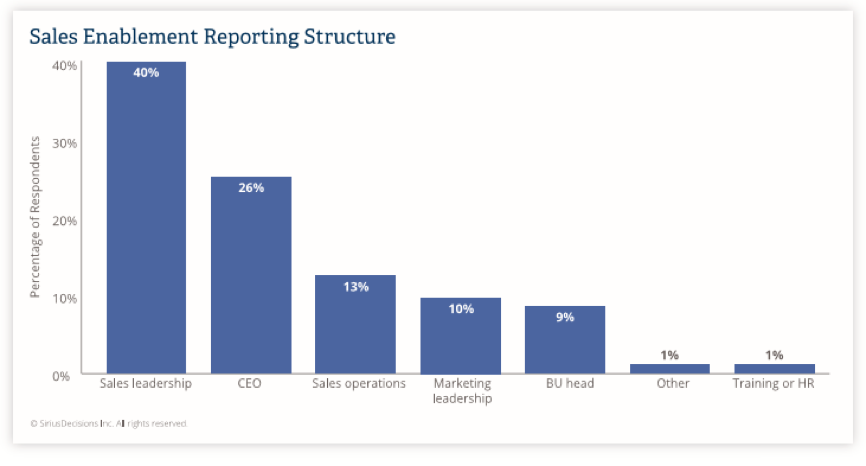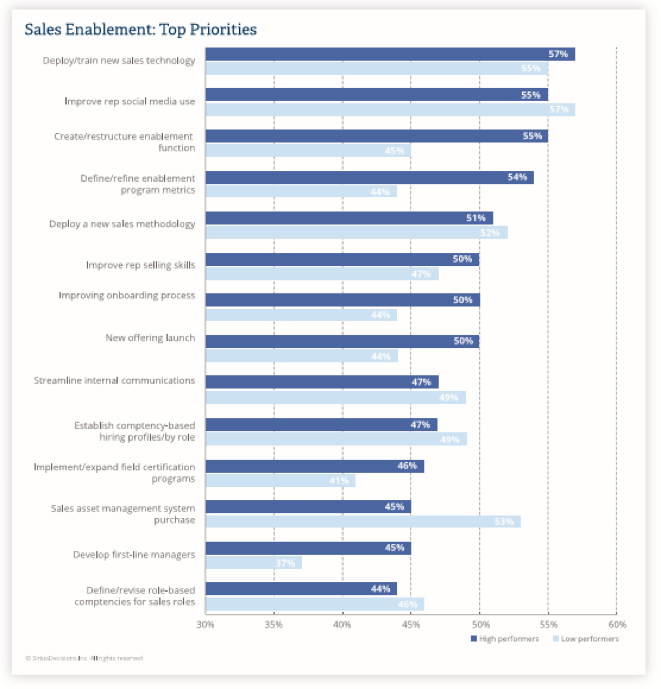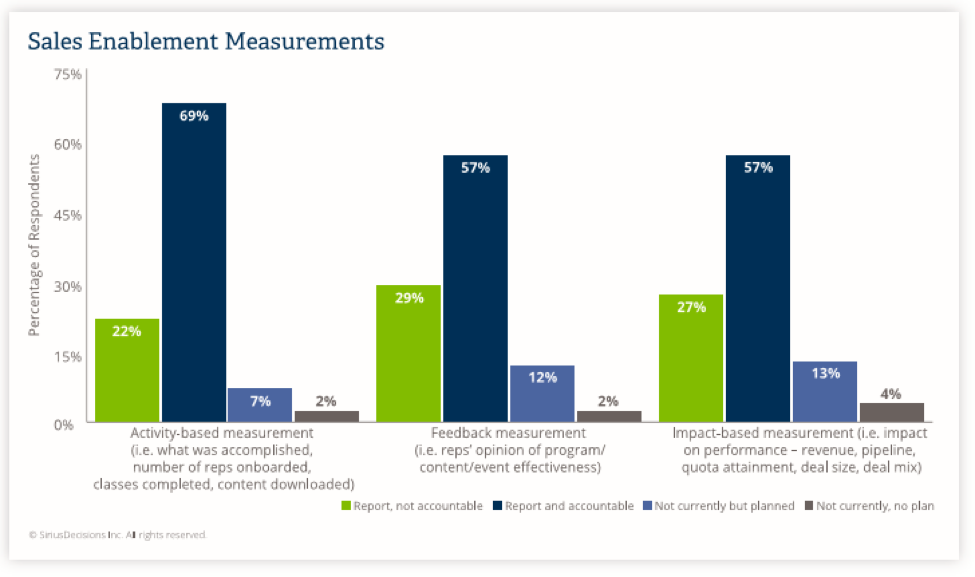Earlier this year, we released our State of Sales Enablement report. Full of insights from sales enablement pros across industries and in organizations of all sizes, this benchmark report has become an annual tradition that we look forward to compiling each year.
And now we’re excited to see that industry analyst SiriusDecisions has taken a different lens and released its own findings in this area. The report is a summary of key findings from a survey of 250 B2B sales enablement professionals from a variety of industries and revenue bands.
Notably, 83% of organizations with more than $750 million in revenue have deployed or plan to deploy an enablement team. In a time when buyers have more choice than ever, and the sales cycle is evolving to meet that shift, a focus on sales enablement is a vote of confidence from both sales leadership and business leadership as to the importance of processes, tools, and talent to help drive revenue. This emphasis is rightfully placed — we saw in the Highspot data that 65% of respondents are experiencing a more complex sales process, though those with a sales enablement process are two times more likely to see reduced complexity in their sales process, confirming that sales enablement helps streamline sales activities and accelerate desired outcomes.
In its early days, sales enablement was often driven out of the marketing organization. As the keepers of the content, this made sense. But over the past five years, we’ve seen a shift in reporting structure as sales realizes that enablement is more than content creation and management.
The largest group of respondents indicated that enablement reports directly to sales leadership (40%), followed by the CEO (26%), sales operations (13%), and marketing leadership (10%). As recently as 2015, 24% of enablement teams reported to marketing. If the trend continues, sales enablement will be almost wholly aligned to sales and business leadership in the next several years.

Not surprisingly, with an emphasis on sales enablement throughout the business, 74% of organizations plan to grow their enablement practices in the next 12 months, indicating a continued rapid ascension in the importance of both people and technology to support sales efforts. Other priorities for top performers include deploying new sales technology, improving rep use of social media, and creating or restructuring the enablement function.

One of the biggest benefits of sales enablement platforms and processes is the ability to measure results. Instead of trusting a gut instinct or assuming, sales and marketing leaders actually know what’s working and what isn’t when it comes to content, training, and onboarding efforts. But how do they measure the health of their sales enablement practices? The number-one answer is “activity-based measurement,” or, in other words, hard metrics associated with content downloads, reps onboarded, and trainings taken. Feedback measurement and impact-based measurement come in a close second, but the takeaway message is that top performing organizations measure their results in more than one way.

Read the full State of Sales Enablement 2017 report
I have summarized some of the key takeaways, but there is much more depth and breadth in the full report. You typically need to be a SiriusDecisions member to access its research, but you can download the SiriusDecisions State of Sales Enablement 2017 report with our compliments.



